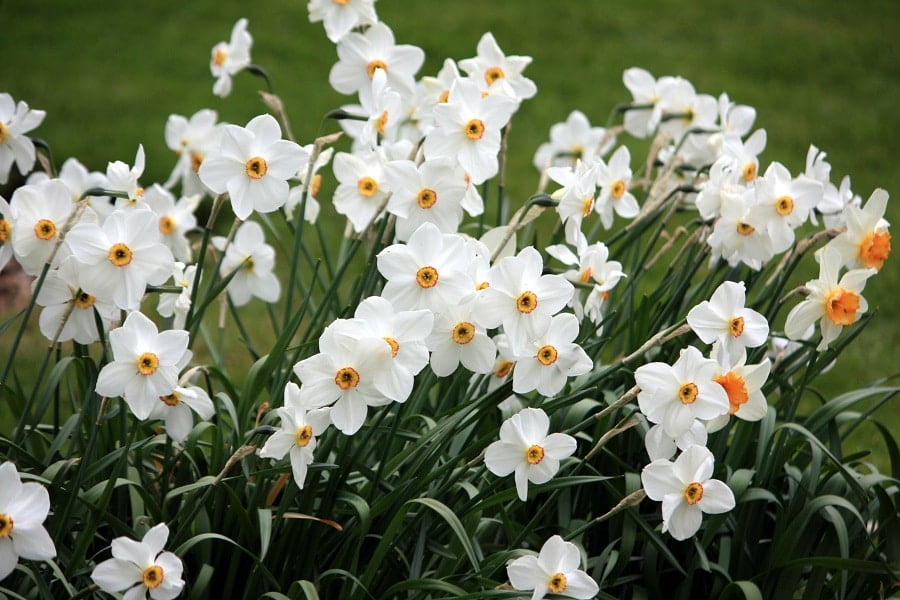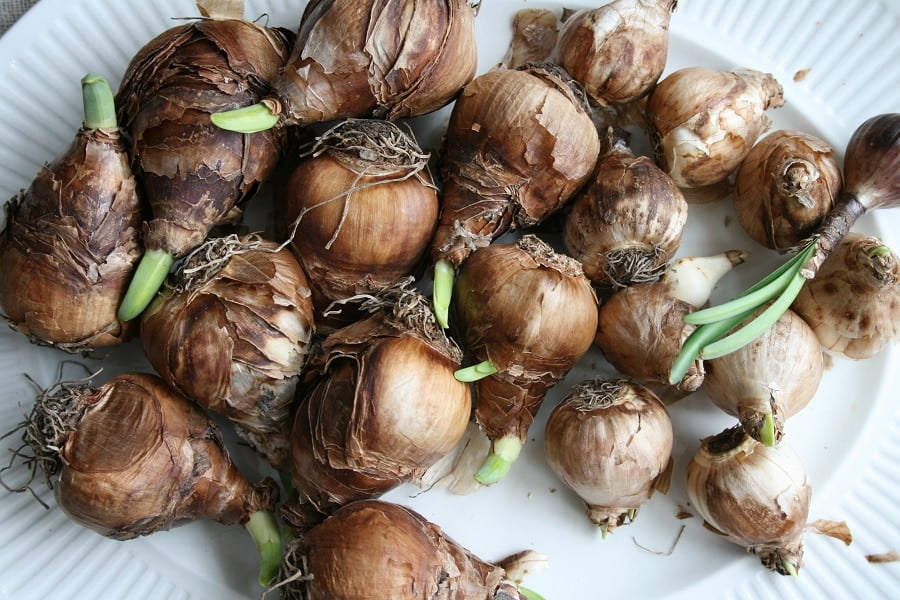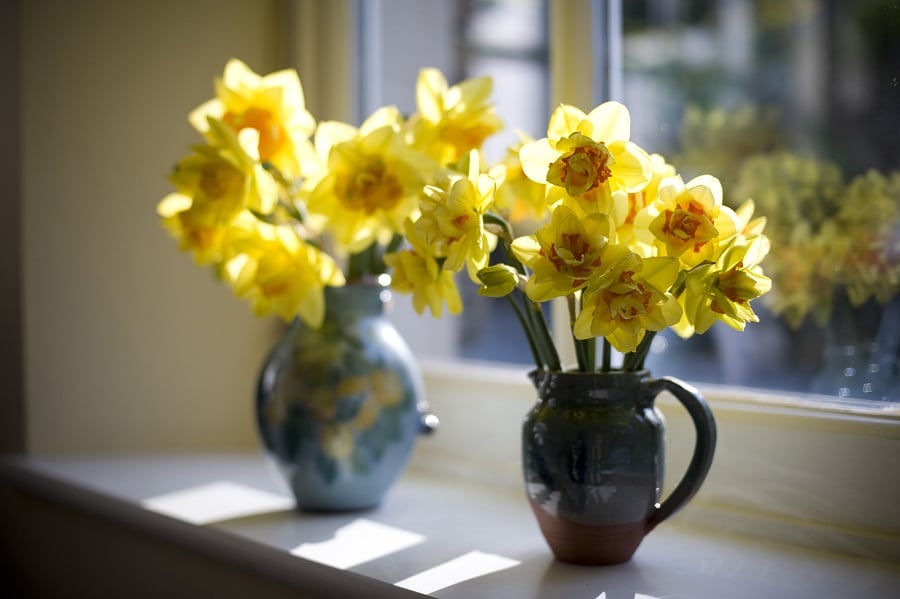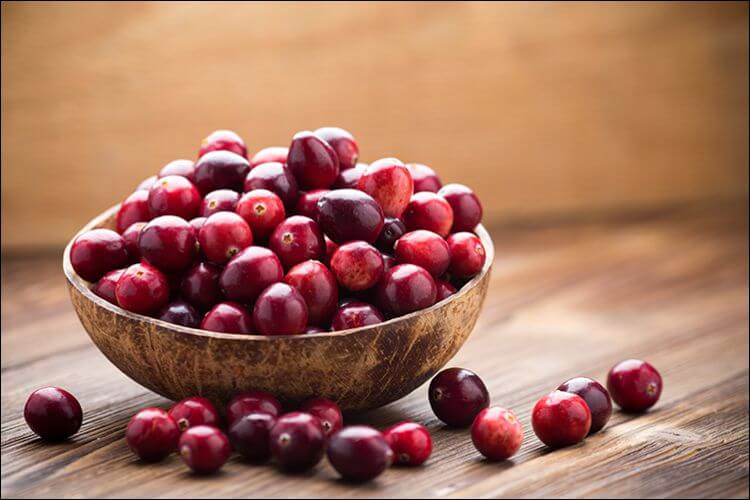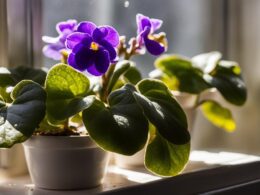The narcissus flower, more commonly known as the daffodil, is one of the most popular flowers that you can plant from bulbs. You can’t miss them in spring, when their flowers liven up every garden. The most common varieties of narcissus flowers are white and yellow. Both have only three petals, a tubular base, and a central crown that can often have a different color. Its name comes from the Greek narke, which means stupor or numbness. This can be attributed both to the narcissus flower’s poisonous nature and to its narcotic fragrance. The narcissus flower is not difficult to grow and it can prove to be one of the most beautiful flowers in your garden. Because we want to prepare you for growing your own, here are 14 tips that you should keep in mind.
How to Grow the Narcissus Flower
1. Plant Them in Clumps
Due to their shape and to the fact that they don’t have a rich foliage, narcissus flowers are better grown in larger clumps rather than groups of only 3 or 4 bulbs. We advise you to plant around 5 to 7 bulbs close to each other if you want the appearance of a dense clump of flowers. This will balance the look of your garden and ensure that you get no empty spots. Plus, the narcissus flower isn’t disturbed by others growing next to it, so you don’t have to worry about it not developing properly if you plant the bulbs too close together.
2. Beware of Too Much Heat
Most plants are unable to grow in cold weather, and the narcissus flower makes no exception. However, it does prefer cool weather to an extremely warm one. As such, you have to pay attention to where you’re going to plant your flowers. If you live in an area that gets extremely hot, planting the narcissus flower outside might not be an option for you. Still, that doesn’t mean that you can’t grow these flowers at all. You can always do that in containers inside the house. The trick is to make sure the temperature doesn’t go over 75 degrees Fahrenheit. The perfect temperature is somewhere between 50 and 60 degrees.
3. Provide Them with Plenty of Sun
One thing the narcissus flower can’t get enough of is the sun. As opposed to other flowers that also require a bit of shade to compensate for the sun exposure, most narcissus flowers can develop even in full sun. If this is not possible in your garden, you should know that partial shade can also be an option, but your plants will only tolerate it, not really thrive in it.
4. Choose the Right Type of Soil
The narcissus flower prefers sandy soil, but it can also develop in clay soil if necessary. However, there’s a small difference that you have to be aware of depending on the type of soil you have in your garden. If you have sandy soil, you’re going to have to plant your flowers deeper. If you’re struggling with clay soil, plant them closer to the surface. No matter the type of soil you end up planting the narcissus flowers in, you have to make sure it drains well and it’s improved with compost. If it’s too compact, you’re going to have to use a garden fork to break it apart.
5. Plant at the Appropriate Depth
The depth at which you plant the narcissus flower is very important for its growth and development. We recommend you to plant the bulbs so as for the pointed end to face upwards and be placed at a depth of about 4 inches. If you plant the bulbs too close to the surface of the soil, they’ll end up growing multiple other bulbs. While this may sound like a good thing, it actually isn’t. That’s because these bulbs won’t grow any flowers.
6. Water Them Appropriately
When it comes to watering, the narcissus flower requires a lot of moisture during the fall. Make sure that before the first frost, you provide your plants with plenty of water in order for their roots to develop. This is not true in summer as well, when the narcissus flower is dormant. This means that while you should water it every now and then, providing it with an excessive amount of water will only hurt it.
7. Fertilize Them
Fertilization is extremely important for the health and proper development of the narcissus flower. If you’re wondering when you should fertilize your plants, the answer is in early spring. That’s the moment when the foliage of your plants starts pushing through the ground. In terms of the type of fertilizer that you should use, we recommend a granular one that is created especially for bulbs. Moreover, try to choose one with slow-release, because this will provide your plants with the nutrients they need for a longer period of time.
8. Beware of Diseases
Perhaps one of the greatest things about the narcissus flower is the fact that it’s seldom affected by diseases or pests. When it comes to animals and insects, they tend to stay away from these flowers since they’re poisonous. Still, sometimes, certain narcissus flowers might develop vertical streaks on their leaves. This means that they might have caught a virus. The best course of action, in this case, is to dig out the bulbs and throw them away. Then, make sure to check the rest of your flowers, since this virus is easily transmissible.
9. Plant Some Companions
We’ve already mentioned that the narcissus flower doesn’t have a problem growing next to other narcissus flowers. What’s even more interesting is that it can also develop next to other types of plants. For instance, you can plant it next to leafy perennials, ground covers, or even annuals. They’re also appropriate to plant on a lawn, as well as under deciduous trees. The one place where you shouldn’t plant them is under evergreens.
10. Grow Them in Pots
As with most flowers, the narcissus flower can also be grown in containers, be it outdoors or indoors. Generally, the same rules apply when it comes to planting the flowers and taking care of them. An additional tip that you should keep in mind is that narcissus flowers grown in containers benefit more from you planting them closer together.
11. Divide the Bulbs
When it comes to plant division, you can divide the narcissus flowers the moment their foliage withers. This is a sign that the flower has stopped growing and you can carefully take the bulbs out. Use a spade or a digging fork to remove them and be careful not to damage them in any way. That’s because you’re going to have to replant them moments later, as deep as you planted them the first time.
12. Deadhead the Flowers
First of all, we have to mention that the narcissus flowers make excellent cut flowers, so you should take advantage of that and decorate your home with them. If this is not something you enjoy doing, then you’re going to have to deadhead your plants once you notice that the flowers have started to fade. The reason behind this technique is to stop the plants from using their energy to form new seeds. That energy can be put to better use when the time comes for the plants to develop their bulbs during a new growing season.
13. Care for Them at the End of the Season
When the narcissus flowers have completely dried off, it’s time for some end-of-the-season care. The first thing you should do is remove their foliage. Then, add some mulch after the first frost. The mulch will help your plants remain dormant even if you get warmer periods in the cold season.
14. Find out What Causes Them Not to Flower
In some cases, you could think you’re doing everything right and have the leaves of your plants develop every spring, only to end up feeling disappointed when no flowers actually grow. This is called daffodil blindness and it can have multiple causes. For instance, drought can be one of them, or you knotting their foliage after they flower. A lack of soil nutrients can also be responsible, and so can overcrowding. If this happens to you, try taking the bulbs out and planting them further apart.
Summing Everything Up
We hope today’s tips on how to grow narcissus flowers will prove useful to you whenever you decide to add this flower variety to your garden. As you can see, the narcissus flower is not a high-maintenance option, so it’s suitable both for people who are more knowledgeable and experienced gardeners and for people who are just getting started.
Not only are these flowers low-maintenance, but they’re also fit to plant almost anywhere. They look lovely, smell divine, and liven up the look of any garden. What more could you possibly wish for in a plant? If today’s guide has convinced you of how much of an amazing option the narcissus flower is, don’t hesitate to purchase some narcissus bulbs as soon as possible.





